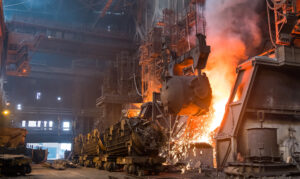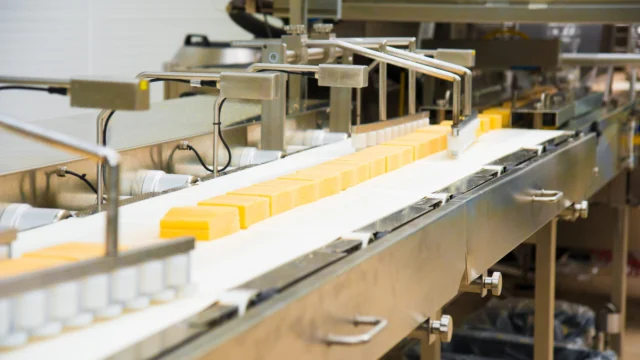Solving Motor Issues Reduces Production Downtime for a Major Steel Company
solutions

Solving Motor Issues Reduces Production Downtime for a Major Steel Company
An integrated steel producer with major production operations in the United States and Central Europe was encountering various motor issues as well as critical equipment availability of required repair parts.
For many years the company had successfully outsourced its motor management process. In conjunction with its re-organizational goals the company decided it would be more cost-effective to keep this process in house. Over a four-year period, the company started to experience issues with both AC and DC motors. The onsite Materials Management motor warehouse personnel that took over the inventory did not have full knowledge of motor attributes and locations, resulting in unexpected and costly delays. Motors were incorrectly identified and not available as needed for planned and unplanned maintenance activities.
LCE’s Asset Management Experts Develop a Motor Verification Process and Digital Tracking Tool

LCE had a previous reliability support engagement at the plant and was asked to help quickly correct this ongoing and costly problem. Plant supervisors requested help from LCE’s Asset Management Services (AMS) team to address the most critical and problematic area: issues with the blast furnace motors. LCE and steel plant personnel developed a motor verification process which directs motors to be verified first based on criticality or importance. The AMS team proceeded to help with collecting field data and measurements, and then verifying warehouse spares. As part of this effort the AMS team revised and often created motor attributes where they were nonexistent or not easily understood due to generic descriptions. A digital tracking tool was developed to populate all current and collected motor data. This tracking tool captured in real time the need to correct the motor problem and correct it quickly, all while not interfering with production.
With the help of key steel company members, LCE’s AMS team was able to identify and help correct two main issues:
Incorrect motors were received from the motor warehouse due to poor CMMS management
During planned and unplanned maintenance activities, incorrect motors were routinely received from the motor warehouse. These unplanned delays were very costly in terms of man hours and lost production. The Maintenance department blamed Materials Management staff for delivering the incorrect motor while the Materials Management department was simply delivering what was ordered and available. This put an enormous strain on both departments. The team quickly determined that the CMMS in use did not have the correct item number – or had no number at all – for equipment Bill of Materials (BOM).
Working with a plant representative, AMS personnel verified each motor in the field and warehouse. This task highlighted many opportunities for improvement. Comparing attributes between field and warehouse motors revealed key differences in junction box location and shaft size (length and diameter). The most surprising finding was that motor shafts had been modified in the field when the wrong motor was delivered or it wasn’t a direct fit. For one type of motor, only one of the six motors in the warehouse were a match for what was found in the field. AMS personnel developed a detailed tracking sheet which highlighted the key differences to better identify critical assets that did not have a suitable spare available. Using this tool, the area Maintenance Manager was better informed of the deficiencies and able to make informed decisions when ordering critical spare parts. AMS personnel also updated the CMMS to include the correct and verified motor item number.
Motors were incorrectly identified, contributing to motor warehouse identification and location issues
The process of verifying motors in the field and the warehouse uncovered the need for training and a procedure for identifying, receiving and storing motors at the motor warehouse. AMS personnel updated the CMMS with correct attributes to better define the motors implemented a practice of attaching a permanent metal tag with the Item number. This simple procedure eliminated incorrect identification issues.
AMS personnel also identified warehouse environmental issues such as roof leaks and changing temperatures that were causing extreme corrosion and damage. Based on AMS team recommendations, the Motor warehouse Supervisor immediately initiated actions to remedy the deficiencies. These actions included a robust and detailed approach to preventive maintenance on stored motors, such as rotating shafts, applying corrosion preventive compound, and protective material on shafts to avoid marring and scratches. He also created and implemented a recommended strict inspection checklist for receiving motors.
A Well-defined Process Contributes to Improved Performance and Teamwork
More than two years of data and process development have significantly improved performance. All motors ordered and received from the warehouse are now correct and of a higher quality than ever before. The Maintenance Area Manager claims this saves approximately $40,000 per week or per occurrence in lost production and wasted man hours. Maintenance personnel have gained confidence in the CMMS system accuracy and, most importantly, the relationship between Materials Management and the Maintenance department is now strong. Both teams understand each other’s needs with a focus on efficiency and quality. The development of a motor verification process and a strong visual tracking tool helped identify all shortfalls they were experiencing and can also prevent them in the future. Having a well-defined process of their own will help them “perform and repeat” verification of their motors corporation wide.
 To learn more about LCE’s Asset Productivity Consulting Services,
To learn more about LCE’s Asset Productivity Consulting Services,
please visit our website

